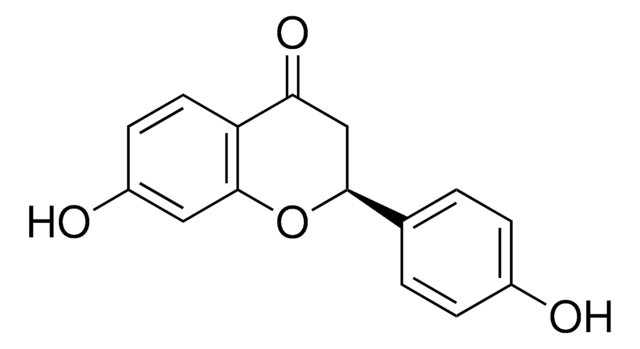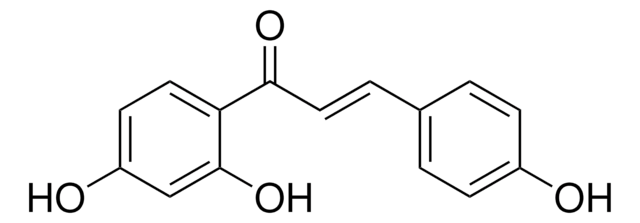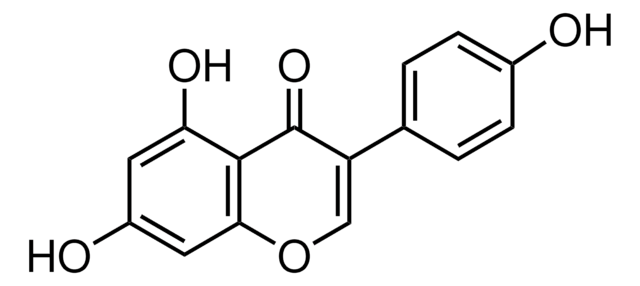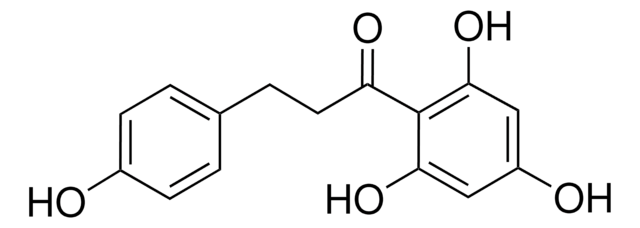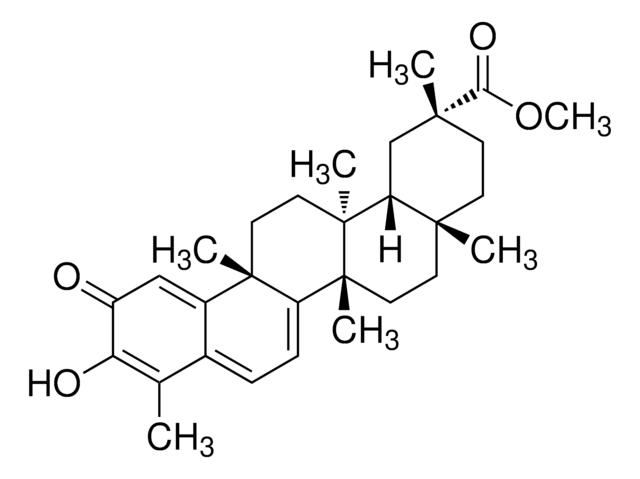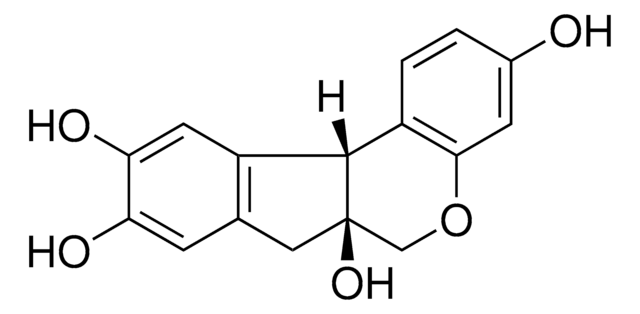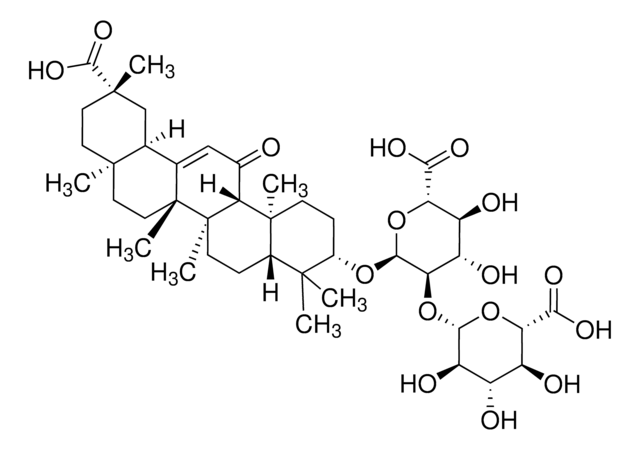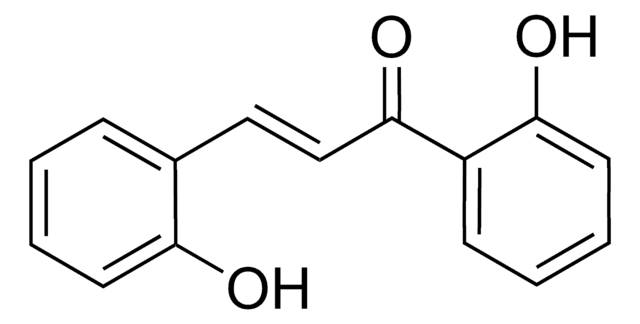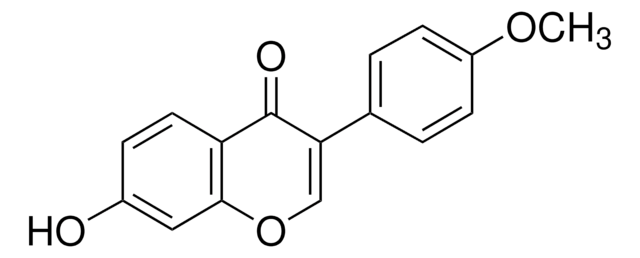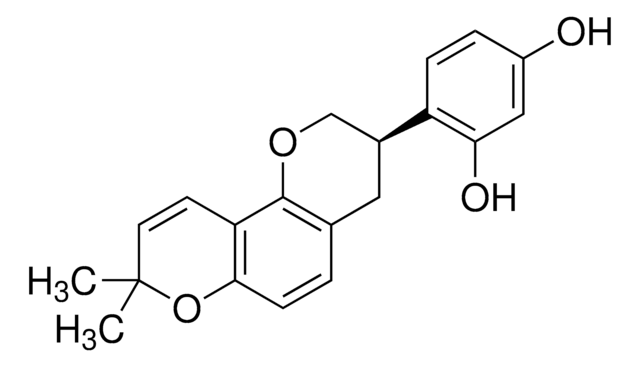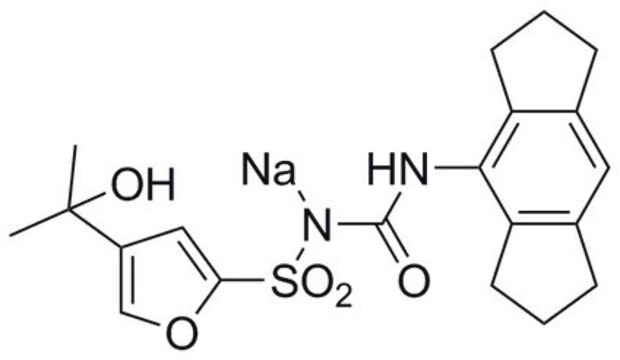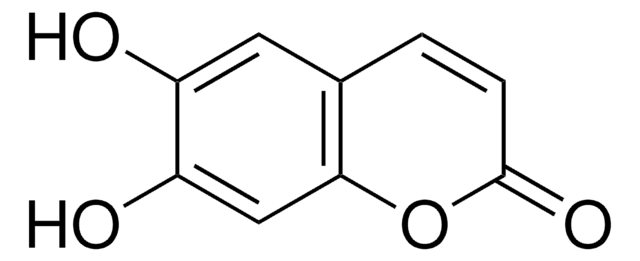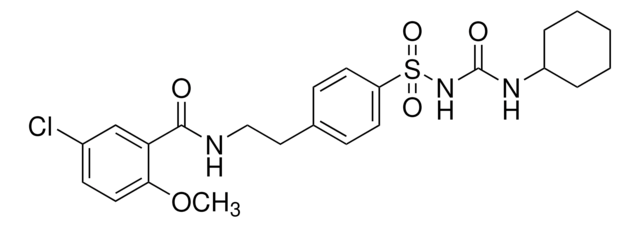I3766
Isoliquiritigenin
powder
Sinónimos:
(E)-1-(2,4-Dihydroxyphenyl)-3-(4-hydroxyphenyl)-2-propen-1-one, 4,2′,4′-Trihydroxychalcone
About This Item
Productos recomendados
form
powder
Quality Level
color
yellow to orange
solubility
H2O: <0.1 mg/mL
methanol: 10 mg/mL
DMSO: 20 mg/mL
storage temp.
2-8°C
SMILES string
Oc1ccc(cc1)\C=C\C(=O)c2ccc(O)cc2O
InChI
1S/C15H12O4/c16-11-4-1-10(2-5-11)3-8-14(18)13-7-6-12(17)9-15(13)19/h1-9,16-17,19H/b8-3+
InChI key
DXDRHHKMWQZJHT-FPYGCLRLSA-N
Gene Information
rat ... Alox5(25290)
¿Está buscando productos similares? Visita Guía de comparación de productos
General description
Application
- as a bone morphogenetic protein (BMP) agonist in zebrafish embryos
- as a guanylyl cyclase activator in zebrafish embryos
- to test its antitumor and antiviral effects against Epstein-Barr virus-associated gastric carcinoma
Biochem/physiol Actions
Features and Benefits
Caution
Storage Class
11 - Combustible Solids
wgk_germany
WGK 3
flash_point_f
Not applicable
flash_point_c
Not applicable
ppe
Eyeshields, Gloves, type N95 (US)
Certificados de análisis (COA)
Busque Certificados de análisis (COA) introduciendo el número de lote del producto. Los números de lote se encuentran en la etiqueta del producto después de las palabras «Lot» o «Batch»
¿Ya tiene este producto?
Encuentre la documentación para los productos que ha comprado recientemente en la Biblioteca de documentos.
Los clientes también vieron
Contenido relacionado
Cyclic nucleotides, including cyclic AMP (cAMP), cyclic GMP (cGMP) and cyclic ADP-ribose, have been extensively studied as second messengers of intracellular events initiated by activation of GPCRs. cAMP modifies cell function in all eukaryotic cells, principally through the activation of cAMP-dependent protein kinase (PKA), but also through cAMP-gated ion channels and guanine nucleotide exchange factors directly activated by cAMP.
Nuestro equipo de científicos tiene experiencia en todas las áreas de investigación: Ciencias de la vida, Ciencia de los materiales, Síntesis química, Cromatografía, Analítica y muchas otras.
Póngase en contacto con el Servicio técnico